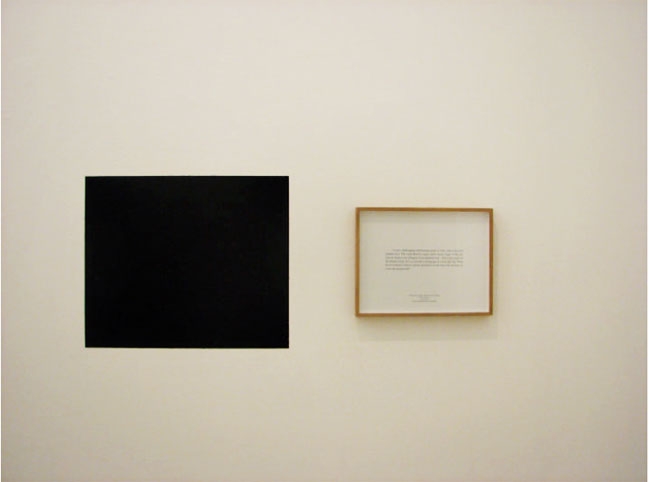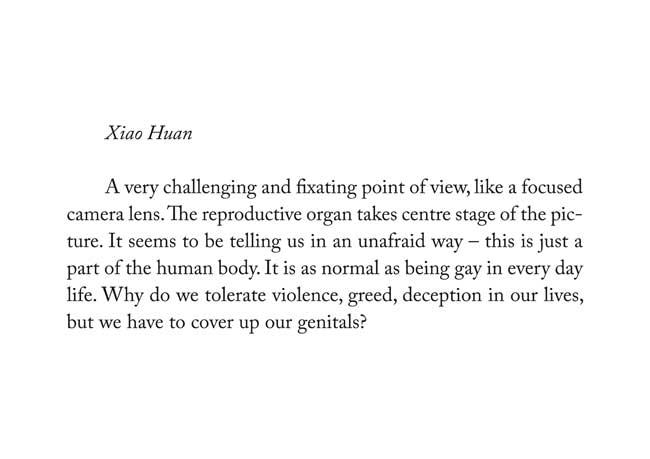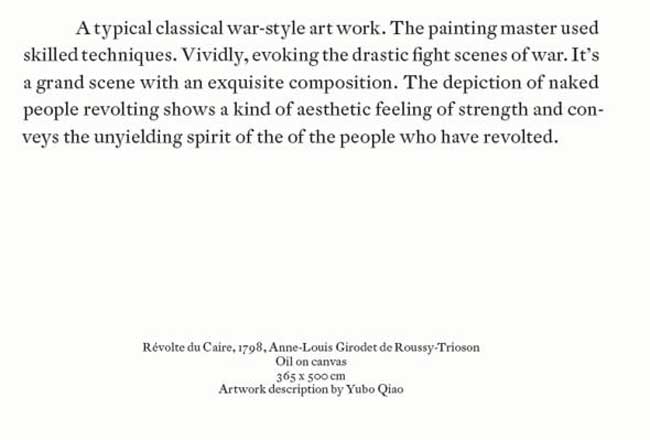In her essay The Aesthetics of Silence, Susan Sontag considers some fertile contradictions in artistic theory. For her, it is from what she calls Silence that since the modern period has been, where a work of art draws its greatest power. This Silence that she relates in a wide sense to the idea of reduction, of withdrawal and effacement but also to misunderstanding and vacuity, relates particularly to the act of removing objects (and artworks) from sight. For the author, the most ambitious, edifying and pure art is found in the opposite to unduly noisy gestures: the art of the unheard melodies. Or unseen one might add in the case of the Iranian artist Leila Pazooki.
L'Origine du Monde and Revolt in Cairo are part of a much wider project by the artist, The Collection of Modern Art (2011) in which Leila Pazooki questions ideas relating to copyright, to the art market and its history, to reference and citation. In the two works currently shown by the Nadour collection, the artist makes a direct reference to the paintings The revolt of Cairo, 21st October 1798 by Anne Louis Girodet de Roucy Trioson (1810) and L'Origine du Monde by Gustave Courbet (1866). Starting from standard reproductions of these two famous paintings, Leila Pazooki has made an unusual request to the copy painters of Dafen, a Chinese village known for its skill in artistic reproduction. The artist has asked them to give meaning to the images they see before them. From copyists they become interpreters. Their commentaries have been written up, printed and displayed in frames. Each interpreter/copyist is cited. Next to these texts, black expanses corresponding to the template of the original works are placed against the walls.
At once absent and present through the descriptions and the power of imagination (and memory), the Old Masters retrace the steps of artistic globalization. Within this geographical and semiotic movement, Leila Pazooki underlines the power of interpretation of each commentary displayed beside the artworks.
Translated by Theodora Taylor.





Follow us on: